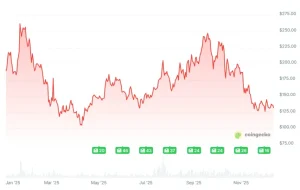Bitcoin Hashrate Sees Steady Growth Amid Rising Institutional Interest

The Bitcoin network’s computing power, known as hashrate, registered a 4% increase during the first half of August, underscoring resilience in the digital asset ecosystem despite volatile market conditions. Analysts interpret this rise as a sign of expanding mining capacity and renewed institutional interest in cryptocurrency infrastructure. With mining companies investing in more energy-efficient hardware and global competition intensifying, the hashrate’s upward trajectory reflects growing confidence in Bitcoin’s long-term value proposition and its position as a decentralized financial instrument. The development also highlights shifting dynamics in energy usage and regulatory oversight tied to mining activities.
Bitcoin Hashrate Records August Upswing
The Bitcoin network’s hashrate, a key metric that measures the total computational power dedicated to verifying transactions and securing the blockchain, climbed by 4% in the first two weeks of August. This increase signals heightened activity from miners, even as Bitcoin’s market price remains within a consolidating range.
The growth in hashrate is often interpreted as a positive indicator for network security, as a larger and more competitive mining base makes the blockchain more resilient against potential threats. It also demonstrates miners’ willingness to allocate resources despite fluctuating profit margins, driven by expectations of long-term returns.
Institutional and Industrial Dynamics
Mining companies have been expanding their operations, supported by institutional capital flows. Firms are investing heavily in next-generation, energy-efficient mining rigs, which allow greater output while mitigating operational costs. These technological upgrades are contributing to steady growth in network capacity.
At the same time, increasing institutional participation in Bitcoin-related ventures has bolstered confidence in the asset class. Major mining pools are diversifying geographically to reduce regulatory risks and tap into renewable energy sources, reflecting the industry’s ongoing efforts to address environmental criticisms.
Market Implications
The rising hashrate carries several implications for the broader crypto market. First, it reinforces Bitcoin’s reputation as the most secure blockchain, attracting long-term investors who value stability. Second, it underscores the competitiveness of the mining sector, where only the most efficient players are likely to survive as operational costs rise and block rewards decline after halving events.
For investors, a strengthening hashrate can signal robust network fundamentals, even when price movements remain subdued. The metric thus serves as an important counterbalance to short-term market volatility, offering insights into the underlying health of the Bitcoin ecosystem.
Looking Ahead
With a potential halving event scheduled next year, miners are positioning themselves strategically to maintain profitability. The recent 4% growth in hashrate not only reflects confidence in Bitcoin’s future but also signals the sector’s adaptability in managing technological, financial, and regulatory challenges.
As Bitcoin continues to attract attention from both institutional and retail investors, its evolving mining infrastructure will remain a key determinant of its sustainability and long-term market trajectory.




